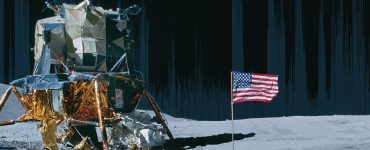Shared Resources Drive Discoveries in Neural Interface Tech
Principal Investigator: Dr. Stuart Cogan, front left, professor of bioengineering from the biomaterials research cluster
Co-Investigator: Dr. Joseph Pancrazio, front right, associate provost at UT Dallas; professor of bioengineering from the neural engineering research cluster
Outside Collaborators: researchers at Blackrock Microsystems and the University of Utah
Dr. Bryan Black, a research associate completing a postdoctoral fellowship in the lab of Dr. Joseph Pancrazio, was one of the first people to move into BSB.
“The new building is an extraordinary collaborative space in terms of both architecture and resources,” he said. “Moving into it made me feel like the possibilities were limitless.”
To Black, possibilities mean working on significant projects such as the research his lab is doing with colleagues in Dr. Stuart Cogan’s lab: improving the stability and reliability of penetrating microelectrode arrays (MEAs) produced by Blackrock Microsystems. In pilot studies, this flagship neural interface technology has allowed paralyzed people to control electronic devices such as TVs, computers or wheelchairs with their thoughts.

Their solution is to use amorphous silicon carbide and sputtered iridium oxide in the devices.
The MEAs are also used in a variety of other treatments for the central nervous system, but only last in the body a relatively short time, requiring multiple implantation surgeries. This group has received funding from the Defense Advanced Research Projects Agency, or DARPA, to design MEAs to last longer in the body.
“Silicon carbide in neural interfaces is not widely used, but if it becomes the main material of the device, then we could make thinner MEAs,” said Dr. Alexandra Joshi-Imre, a member of Dr. Cogan’s lab. “We expect the amount of current and signals needed to activate the nerve would be much less, minimizing the foreign body response that can lead to device rejection.”
Their proposed solution is possible because of several resources: expertise, equipment and proximity.


Cogan is a highly published scientist who has spent much of his career working in industry; and Pancrazio is a leading researcher in national initiatives. Both are fellows of the American Institute for Medical and Biological Engineering, a distinction reserved for the top 2 percent of the field. Cogan joined UT Dallas in 2014, and Pancrazio joined a year later.
The research requires the use of equipment such as an advanced confocal microscope for high-speed live cell imaging, tissue slice histology; and immunostaining. Their microscope was built between and is shared by several labs.
“If I want to do tissue histology and section a piece that is 8 millimeters wide, you go to most other labs and you can’t do it because you don’t have a microscope that is capable,” Black said.
Often, conversations about the research they are conducting happen in unofficial moments, such as seeing each other in corridors.
“We live in an age of email and text messages,” Black said. “There is nothing like going down the hall, having a face-to-face conversation and together understanding the results we’re seeing.”





